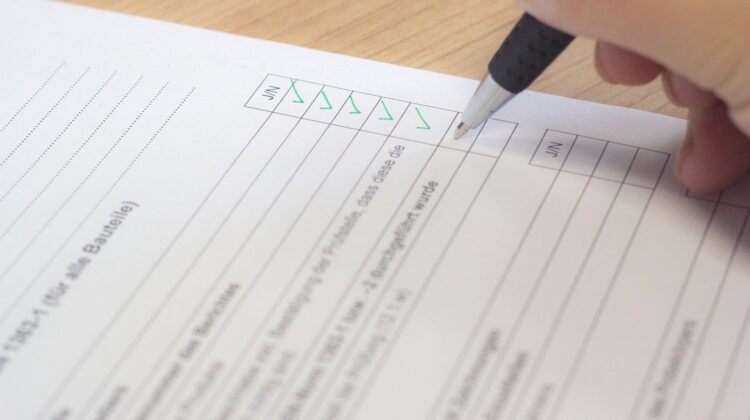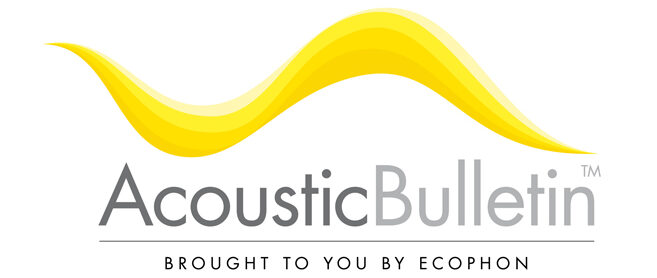
In many circumstances it may be desirable to refer to international or national standards to ensure that exact details of quality, methods, measures etc. is precisely corresponding to a predetermined set of rules and guidelines. There are several standards relating to room acoustics that anybody working in the building industry could utilize for better collaboration and higher quality results.
ISO 354
Measurement of sound absorption in a reverberation room
Standard for measuring sound absorption in reverberation rooms. The standard describes a method for determining the sound absorption coefficient of materials when measuring reverberation time in rooms. A round robin test of several laboratories revealed significant differences in the results measured on the basis of 354. The standard har undergoing extensive revision which has been delayed several times due to the high complexity of the subject and rigorousness of the working group.
ISO 717-1
Rating of sound insulation in buildings and of building elements — Part 1: Airborne sound insulation
Describing assessment of sound insulation in buildings and of building components. Defines single number quantities for airborne sound insulation of building elements.
ISO 10848-2
Laboratory and field measurement of flanking transmission for airborne, impact and building service equipment sound between adjoining rooms.
Standard regarding laboratory and field measurements of flanking transmission for air-borne sound, footfall sound and sound from construction equipment between adjacent rooms – Part 2: Type B elements where the influence of the joint is insignificant.
Measured quantities can be used to qualify different products and requirements, or can be used as input data for prediction methods, such as ISO 12354‑1 and ISO 12354‑2.
Part 2 describes application to “Type B” elements in cases where the junction between element has a smaller influence.
ISO 11654
Sound absorbers for use in buildings — Rating of sound absorption
Standard regarding simplified assessment of quality of sound absorbers in buildings through a single digit value. It describes a special form of weighted conversion of absorption coefficients measured through ISO 354 into the single digit indicator αw. This conversion favours absorption around the 500 Hz frequency band and discriminates the 125 Hz frequency band.
Methods for adding additional indication of large variance in absorption between frequency bands is also described as well as a method for further simplifying αw into a absorption classes through an alphabetical evaluation system.
Learn more about sound absorption classes here.
ISO 12345 parts 1-5
Different methods for estimation of sound insulation performance of buildings.
ISO 12345-6
Estimation of acoustic performance of buildings from the performance of elements – Part 6: Sound absorption in enclosed spaces
Standard regarding estimation of sound absorption and reverberation time in enclosed spaces. Particularly relevant for design purposes. Based on calculation method invented by Wallace Clement Sabine. Should be used with caution as I can be imprecise under many practical conditions.
ISO 22955
Acoustic quality of open office spaces
Standard providings technical and methodical guidance on the subject of acoustic quality in open offices. The standard is intended to support design and planning decisions from conception to use. It also provides a solid foundation for communication between the stakeholders involved in the design process.
Find some of the more general guidance on acoustic from the standard here.
ISO 3382-1
Measurement of room acoustic parameters — Part 1: Performance spaces
Standard regarding measurement of room acoustic parameters – including sound strength, G and Clarity, C50. Describes procedure, apparatus needed, method of data evaluation and formulation of test report. Particularly relevant for “performance spaces,” but with far reaching implications for room acoustic design in general.
The technical descriptors G and C50 are superficially described in this post.
ISO 3382-2
Measurement of room acoustic parameters — Part 2: Reverberation time in ordinary rooms
Standard regarding measurement of room acoustic parameters in ordinary rooms – including reverberation time. Describes procedure, apparatus needed, method of data evaluation and formulation of test report.
Find more a more detailed explanation of reverberation time here.
ISO 3382-3
Measurement of room acoustic parameters — Part 3: Open plan offices
Standard regarding measurement of room acoustic parameters in open plan offices – including sound propagating, D2,S. Describes procedure, apparatus needed, method of data evaluation and formulation of test report.
ASTM C 423-17
Standard test Method For Sound Absorption And Sound Absorption Coefficients By The Reverberation Room Method
ASTM C 423 describes the American standardised test methods regarding sound absorption and sound absorption coefficients. It therefore holds some similarities to ISO 354 in its scope. Opposed to its international counter part, ASTM C 423 also provides guidance for evaluation of absorption by field measurements – not just reverberation rooms.
ASTM E-1110 – 06
Standard Classification for Determination of Articulation Class
Describes method of determining articulation class (AS) which characterizes an acoustic ceiling’s ability to contribute to acoustic privacy in office landscapes. AC is calculated based on a series of measurements of different configurations of a 3 element set-up: sound source, receiver, acoustic screen. AC is a direct indication of intermediate zone dampening quality of an acoustic ceiling.
The higher the AC is, the better the speech privacy can be achieved This is especially useful for open environments. It is recommended to use a suspended ceiling with an articulation class of min. 180 to achieve an acceptable level of acoustic privacy.
ASTM E-1414 / E-1414 – 16
Standard Test Method For Airborne Sound Attenuation Between Rooms Sharing A Common Ceiling Plenum
Describes laboratory test method for evaluating sound attenuation through a shared plenum (space between constructed and suspended ceiling) between two seperate rooms. The method simulates typical construction conditions, but prescribes special features of design that “isolates” the sound transmission path to the plenum.
ASTM E-1414/E-1414 – 16 also describes methods of evaluating additional sound insulating setups and materials like barriers har panel-backings.
All of these standards are quite technical, detailed and complex. Luckily you don’t need to be familiar with any of them to work with room acoustics. If you are looking for basic knowledge to start of from have a look at this post:
International & American standards for indoor acoustic comfort

